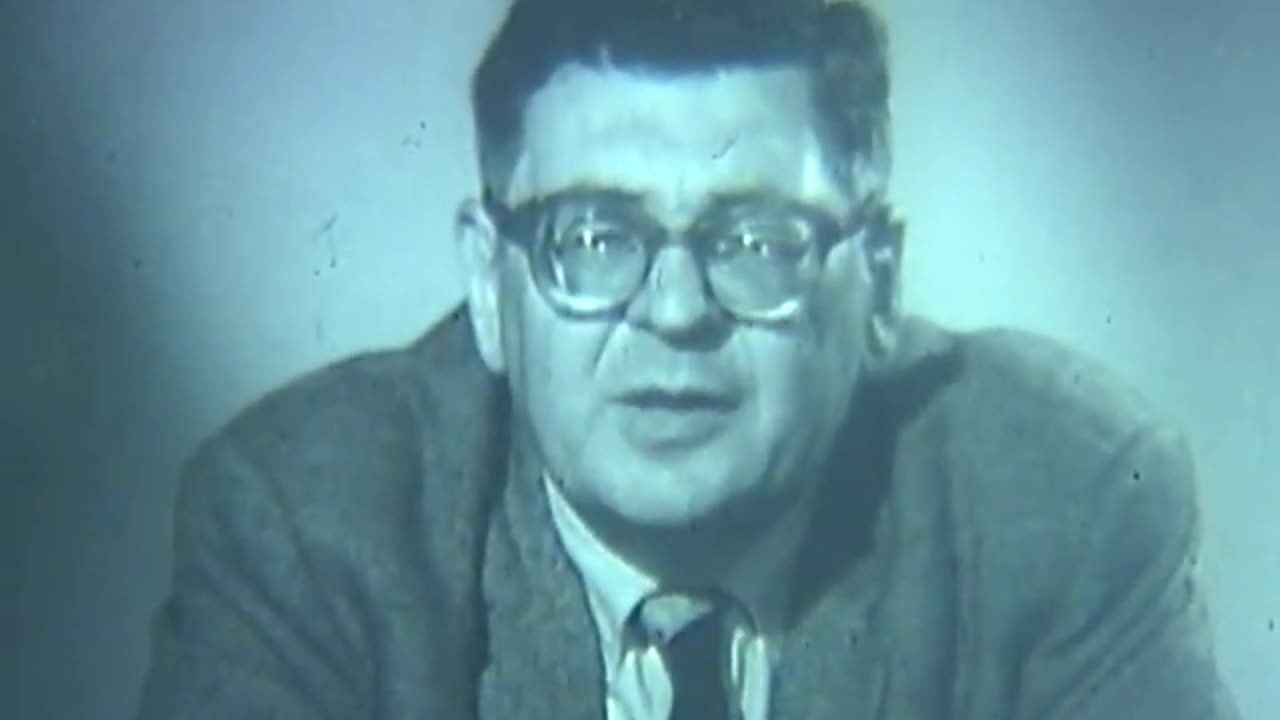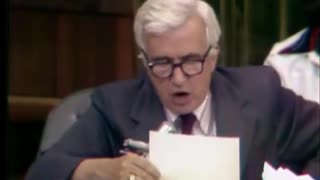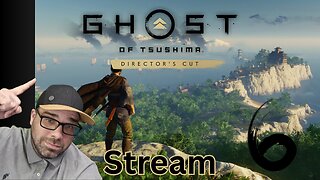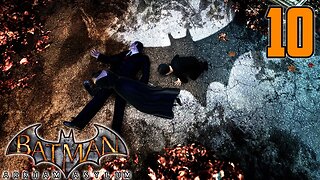Premium Only Content

CIA Archives: 1st Summit of the Non-Aligned Movement (1961)
The dark side of history: https://thememoryhole.substack.com/
Summit Conference of Heads of State or Government of the Non-Aligned Movement (Serbo-Croatian: Конференција шефова држава или влада несврстаних земаља / Konferencija šefova država ili vlada nesvrstanih zemalja, Macedonian: Конференција на шефови на држави или влади на неврзани земји, Slovene: Konferenca voditeljev držav ali vlad neuvrščenih držav) on 1–6 September 1961 in Belgrade, Yugoslavia was the first conference of the Non-Aligned Movement.[1] A major contributing factor to the organization of the conference was the process of decolonization of a number of African countries in the 1960s.[1] Some therefore called it the ″Third World's Yalta″ in reference to 1945 Yalta Conference.[1]
Twenty-five countries in total participated in Belgrade Conference, while 3 countries, Bolivia, Brazil and Ecuador, were observers.[2] The preparatory meeting of Non-Aligned Countries took place earlier that year in Cairo June 5–12, 1961.[3] One of the issues was division of the newly independent countries over the Congo Crisis which led to a rift and creation of the conservative and anti-radical Brazzaville Group and radical nationalist Casablanca Group.[1] All members of the Casablanca Group attended the conference, including Algeria, Ghana, Guinea, Mali, Morocco and the United Arab Republic, while none of the Brazzaville Group was present.[1] The summit was followed by the 2nd Summit of the Non-Aligned Movement in Cairo in 1964. The 1962 Cairo Conference on the Problems of Developing Countries was a direct follow-up of the Belgrade Summit at which Brazil, Ethiopia, India, Senegal and Yugoslavia will work on preparation for the upcoming UNCTAD conference of the ECOSOC.[4]
The Conference
This section does not cite any sources. Please help improve this section by adding citations to reliable sources. Unsourced material may be challenged and removed. (May 2021) (Learn how and when to remove this template message)
Participating states.
Brijuni Islands, an archipelago in the Socialist Republic of Croatia, were initially considered to host the summit after they hosted the Brioni Meeting of 1956, yet the City of Belgrade was ultimately selected due to Brijuni's insufficient venues and concentration of the international communication and media facilities in the capital city of Yugoslavia.[5]
Vladimir Popović was the head of the Yugoslav State Committee for the Preparation of the Conference. The conference brought together 25 independent states. In addition to them, there were three states that had observer status, eleven socialist parties, trade unions from Japan and four other organizations. Socio-economic differences between participants were great and from the beginning participating states often showed different interests. Yugoslavia attached special importance to Latin American countries participation. The participation of these countries, along with the representatives of Europe, should have given the conference the character of a gathering where all parts of the world are represented, and avoid reduction to Afro-Asian meeting as it was case with some meetings before.
President Tito only partially succeeded bringing together all parts of the world to the conference. From Latin America, only Cuba was a full participant, while Bolivia, Brazil and Ecuador had observer status. The reason for that was the inability of these states to resist some pressure from the United States which wanted to preserve its role in the Western Hemisphere. The representatives of Yugoslavia were especially disappointed with Mexico's last minute cancelation. Of the European countries, only Cyprus and Yugoslavia as a host participated in the meeting.
The conference was followed by 1,016 journalists of which 690 were from abroad from 53 different countries and with the New York Times' Paul Hofmann describing the event as a "paradise for cameramen".[6] Together, four Indian newspapers (The Times of India, The Hindu Madras, Indian Express and The Patriot) and four American newspapers (The New York Times, The Washington Post, Los Angeles Times and The Christian Science Monitor) published 177,265 words about the conference in 7 days before, during and 7 days after the conference.[6]
Participants
Afghanistan Mohammed Daoud Khan, Prime Minister of Afghanistan
Algeria Benyoucef Benkhedda, Head of the Provisional Government of the Algerian Republic
Myanmar U Nu, Prime Minister of Burma
Cambodia Norodom Sihanouk, Chief of State of Cambodia
Dominion of Ceylon Sirimavo Bandaranaike, Prime Minister of Ceylon
Republic of the Congo (Léopoldville) Cyrille Adoula, Prime Minister of Congo-Léopoldville and Antoine Gizenga, Deputy Prime Minister
Cuba Osvaldo Dorticós Torrado, President of Cuba
Cyprus Makarios III, President of Cyprus
Ethiopia Haile Selassie, Emperor of Ethiopia
Ghana Kwame Nkrumah, President of Ghana
Guinea Louis Lansana Beavogui, Foreign Minister of Guinea
India Jawaharlal Nehru, Prime Minister of India
Indonesia Sukarno, President of Indonesia
Iraq Hashem Jawad, Foreign Minister of Iraq
Lebanon Saeb Salam, Prime Minister of Lebanon
Mali Modibo Keïta, President of Mali
Morocco Hassan II, King of Morocco
Nepal Mahendra, King of Nepal
Saudi Arabia Ibrahim bin Abdullah Al Suwaiyel, Foreign Minister of Saudi Arabia
Somalia Aden Adde, President of Somalia
Sudan Ibrahim Abboud, President of Sudan
Tunisia Habib Bourguiba, President of Tunisia
United Arab Republic Gamal Abdel Nasser, President of the United Arab Republic
Mutawakkilite Kingdom of Yemen Prince Seif el Islam el Hassan, Prime Minister of the Mutawakkilite Kingdom of Yemen
Socialist Federal Republic of Yugoslavia Josip Broz Tito, President of Yugoslavia
Observers
Bolivia José Fellman, Minister of Education of Bolivia and Jorge Gutierrez Allendrebe, minister plenipotentiary
Brazil Franco Filho de Mello, Brazilian Ambassador to Switzerland
Ecuador Jose Joaquin Silva, Ecuadorian Ambassador to West Germany
Guests
Canada Robert Ford[7]
United States George F. Kennan[7]
United Kingdom Michael Creswell[7]
See also
Yugoslavia and the Non-Aligned Movement
50th Anniversary Additional Commemorative Non-Aligned Meeting
60th Anniversary Additional Commemorative Non-Aligned Meeting
References
Ancic, Ivana (17 August 2017). "Belgrade, The 1961 Non-Aligned Conference". Global South Studies. University of Virginia.
Pantelic, Nada (2011). "The First Conference of Heads of State or Government of Non-Aligned Countries (in Serbian and English)". Exhibition Catalog. Archives of Yugoslavia. ISBN 978-86-80099-35-4.
"2011.- "The first conference of the Heads of state or Government of Non-aligned countries, Belgrade 1961"". Archives of Yugoslavia. Retrieved 28 July 2020.
James Mark; Yakov Feygin (2020). "The Soviet Union, Eastern Europe, and Alternative Vision of a Global Economy 1950s–1980s". In James Mark; Artemy M. Kalinovsky; Steffi Margus (eds.). Alternative Globalizations: Eastern Europe and the Postcolonial World. Indiana University Press. pp. 35–58. ISBN 978-0-253-04650-5.
Mila Turajlić (2023). "Film as the Memory Site of the 1961 Belgrade Conference of Non-Aligned States". In Paul Stubbs (ed.). Socialist Yugoslavia and the Non-Aligned Movement: Social, Cultural, Political, and Economic Imaginaries. McGill-Queen's University Press. pp. 203–231. ISBN 9780228014652.
Jürgen Dinkel (2014). "'To grab the headlines in the world press': Non-aligned summits as media events". In Nataša Mišković; Herald Fischer-Tine; Nada Boškovska (eds.). The Non-Aligned Movement and the Cold War: Delhi — Bandung — Belgrade. Routledge. pp. 207–225. ISBN 978-0-415-74263-4.
Rakove, Robert B. (2014). "Two roads to Belgrade: the United States, Great Britain, and the first nonaligned conference". Cold War History. 14 (3): 337–357. doi:10.1080/14682745.2013.871528. S2CID 153513441.
-
 3:50:14
3:50:14
The Memory Hole
6 months agoNixon Impeachment Hearings Day 2 (1974-07-24)
1.18K -
 LIVE
LIVE
TheSchleppy
23 hours ago $0.47 earned✨TheSchleppy✨24HR 2 YRS ON RUMBLE STREAM! RIGHT INTO RUMBLE HALO EVENT!
75 watching -
 3:08:21
3:08:21
JakRazGaming
3 hours agoPlaying Ghost of Tsushima DIRECTOR'S CUT!! on PS5 Stream 6
10.3K1 -
 29:06
29:06
Scary Mysteries
1 day agoThe Corpsewood Manor Murders: Satan, Secrets, and a Savage End
11.9K8 -
 2:08:56
2:08:56
Lara Logan
1 day agoUNHOLY EXPERIMENTS: Justin Goodman Exposes the Evil of Animal Torture | Ep 28
14.8K20 -
 LIVE
LIVE
The Sufari Hub
2 hours ago🔴SUFARI AUGUST SHOWCASE 🔴W CONTENT 🔴 10 SUBS? 🔴WHAT SHALL WE DO THIS COMING MONTH?
22 watching -
 3:08:40
3:08:40
CHiLi XDD
3 hours agoSTREET FIGHTER 6 - Rise and Grind to Master!
3.32K -
 36:27
36:27
Degenerate Plays
1 day ago $0.42 earnedStatic Shock Actually Changed My Life - Batman: Arkham Asylum : Part 10
6.7K -
 6:32
6:32
Members Club
1 day ago $0.49 earnedWNBA Players Demand Pay—Then Get Petty With Caitlin Clark
5.82K7 -
 18:13
18:13
Bearing
1 day agoThe iDubbbz & Anisa Situation Just Got WORSE 💥 Broke, Smelly & Homeless 🤣
7.6K66